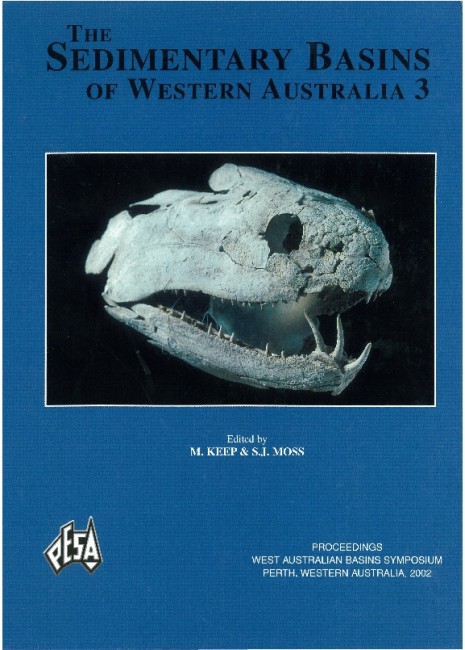Publication Name: The Sedimentary Basins of WA
Authors: A. Gartrell, M. Lisk & J. Underschultz
Publication Volume: 3
Date Published: December 2002
Number of Pages: 36
Reference Type: Book Section
Abstract:
A new fill-spill model has been produced for the Skua Oil Field that challenges the importance of Mio-Pliocene fault reactivation as the principal control on trap integrity. Integration of contemporary and palaeo-fluid-flowindicators within a 3D structural framework, guided by 3D structural restoration, highlights the important role of
pre-existing fault intersections.
The intersection between a subordinate rift fault and a cross-trending pre-rift fault is identified as the key leak
point. Creation of structural permeability through the seal at the fault intersection predates initial hydrocarbon
charge in the late Tertiary and is suggested to be associated with Late Cretaceous to Early Tertiary fault reactivation. The coincidence between the fault intersection and the position of both the original (palaeo-) and current oilwater contacts indicates that this leak point has been the principal control on the volumetric capacity of the Skua trap. Post-charge modification of the trap by southwesterly tilting provided continual supply of hydrocarbons to this leak wne, which may have contributed to the maintenance of structural permeability. Contemporary fluid flow directions derived from hydrodynamic assessment of the reservoir support flow towards this leak point with vertical flow out of the system continuing at the current day. The location of the leak point also corresponds with the position of the largest overlying Hydrocarbon Related Diagenetic Zones, and is broadly consistent with the hydrocarbon seepage recorded in the water column.
Subsequent episodes of fault reactivation may have affected the leak wne, but there is no evidence of substantial Mio-Pliocene fault movement in the Skua trap. Strong reactivation of the nearby Rowan Fault may have partitioned strain in the Skua area and effectively shielded the Skua Fault from reactivation during the Mio-Pliocene.
The results highlight the ability of structural networks formed at fault intersections to act as efficient long-lived
fluid conduits, and these may be au important control on trap integrity throughout the Timor Sea region.


